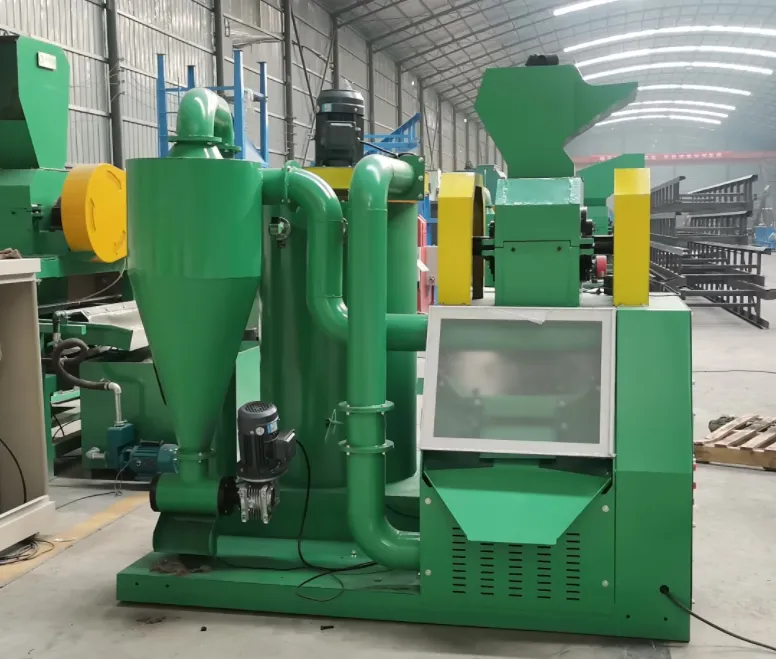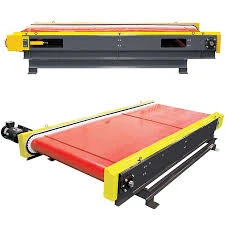The growing concern over electronic waste (e-waste) is driving significant attention towards sustainable management solutions, making e-waste shredders an essential tool in this effort. These machines are designed to break down obsolete electronic devices into smaller, more manageable pieces, enhancing recycling efficiency and environmental safety. Understanding the intricacies of e-waste shredders can transform how companies and individuals handle their electronic waste, aligning with global sustainability goals.

E-waste shredders come with an array of features that can significantly impact their efficiency and the quality of output materials. For instance, many modern shredders incorporate adjustable speed and torque controls, enabling them to process various materials from circuit boards and wires to larger components like computer casings. This adaptability not only increases throughput but also ensures that the shredded material retains maximum value for recycling purposes.
From a technical standpoint, the construction quality and material of the shredder blades are pivotal. High-quality steel blades, often alloyed with chromium or vanadium, can endure the rigorous demands of shredding while maintaining sharpness and durability. This ensures continued operational efficiency and reduces the frequency of maintenance and downtime — a crucial factor for large recycling facilities handling massive volumes of e-waste.

The integration of smart technology in e-waste shredders marks a new horizon in their development. Modern shredders are now equipped with sensors and IoT capabilities, facilitating real-time monitoring and predictive maintenance. This not only minimizes the risk of unexpected breakdowns but also optimizes the shredding process for maximum efficiency and safety, thus extending the life of the machine and reducing operational costs over time.
Safety remains a top priority in the operation of e-waste shredders. Advanced models are equipped with comprehensive safety mechanisms such as automatic shutdown systems which activate upon any indication of overheating or overloading. Additionally, noise reduction technologies are often employed to reduce the environmental impact on the surrounding area, thereby adhering to strict compliance regulations and enhancing workplace safety.
e waste shredder
The impact of e-waste shredders extends beyond mere environmental conservation; it holds economic benefits as well. By efficiently processing e-waste, these shredders contribute to the recovery of valuable materials like copper, silver, and rare earth metals. This not only mitigates the need for virgin material extraction, a process often fraught with environmental and ethical concerns, but also supports a circular economy, generating revenue from what was once considered waste.
Furthermore, the evolving regulatory landscape underscores the importance of adopting advanced e-waste shredding solutions. Governments worldwide are tightening regulations around e-waste disposal and mandating higher recycling standards. Companies equipped with state-of-the-art shredders are better positioned to comply with these regulations, avoiding significant penalties and enhancing their corporate social responsibility profiles.
For businesses considering investing in e-waste shredding technology, several factors should be weighed thoroughly. These include the volume and types of e-waste generated, the specific recycling goals, and the available budget for initial and ongoing costs. Partnering with reputable manufacturers or suppliers, who can offer not only quality machinery but also after-sale support and expertise, is vital in maximizing the return on investment.
Finally, public awareness regarding the benefits of e-waste shredding is growing, prompting organizations to showcase their sustainable practices as part of their brand image. Transparent communication about the environmental benefits achieved through shredding processes can strengthen stakeholder trust and enhance brand loyalty, setting a powerful precedent in sustainability leadership in the industry.
In conclusion, e-waste shredders represent a critical convergence of technology, sustainability, and economic opportunity. By facilitating the efficient recycling of electronic materials, they play a vital role in addressing the world's burgeoning e-waste challenge. As companies and individuals increasingly prioritize sustainable practices, investing in and utilizing e-waste shredders will not only meet regulatory demands but also promote a more sustainable future.


